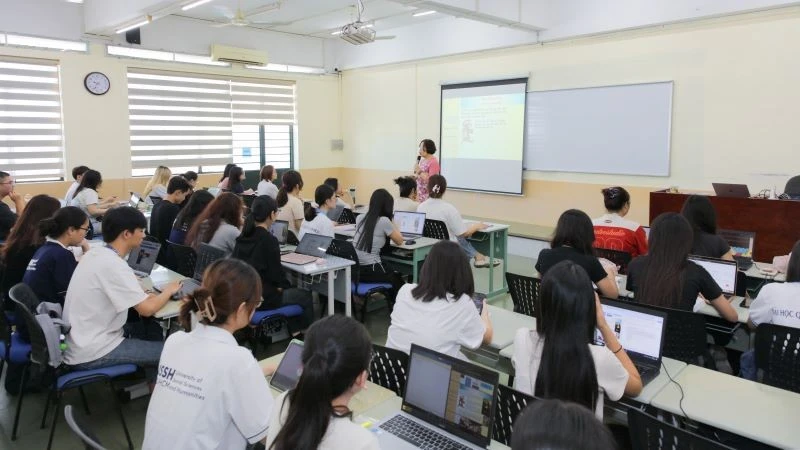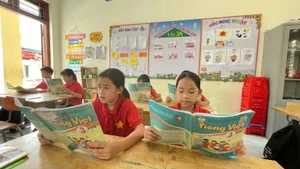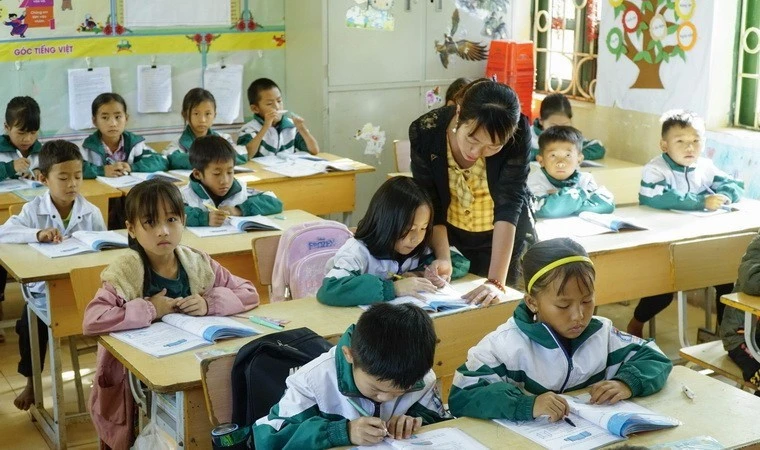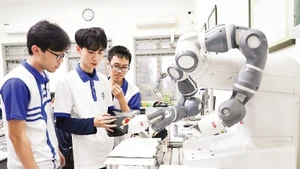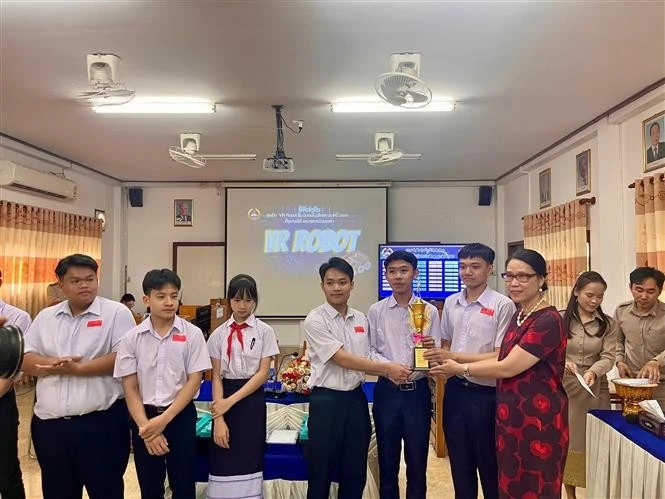In higher education, AI not only contributes to innovating teaching methods and supporting scientific research but also opens possibilities for personalised learning, career forecasting, and improved management efficiency. Many countries around the world have identified AI as one of the strategic pillars in the modernisation of higher education.
For Viet Nam, integrating AI into higher education is not only an inevitable trend but also a strategic imperative to meet the demand for developing a high-quality workforce in the digital era.
According to Professor Tan Yap Peng, Rector of VinUni University (Ha Noi), AI assists in lesson design, image creation, and idea generation for educators. It also automates grading, provides feedback, tracks learning progress, and identifies knowledge gaps among students. AI helps free up educators’ time so they can focus on creative mentoring.
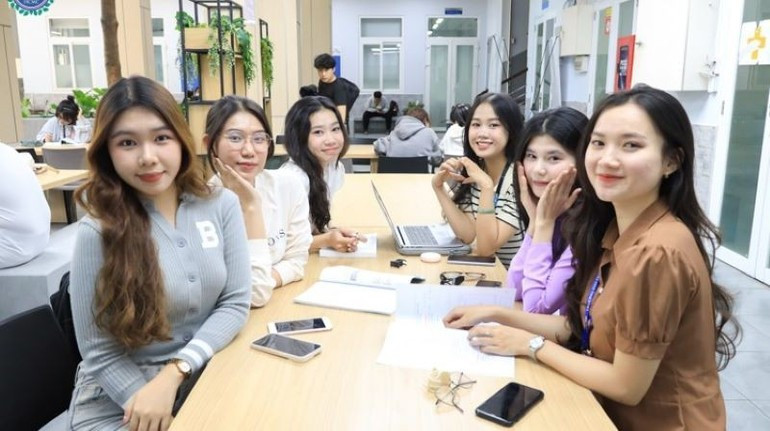
For students, Professor Tan Yap Peng said AI allows for personalised and adaptive learning tailored to each learner’s pace. Understanding AI — particularly its creative and critical use — will become an essential skill for the future.
Experts note that in Viet Nam, the application of AI in higher education is still at an early stage but is being strongly promoted within the framework of the national digital transformation agenda.
Resolution No. 57-NQ/TW dated December 22, 2024 of the Politburo identified the development of science, technology, innovation, and national digital transformation as a “key breakthrough” to drive rapid and sustainable national development in the new era.
On that basis, Resolution No. 71-NQ/TW dated August 22, 2025 further emphasised breakthroughs in education and training development, highlighting higher education as the core in producing high-quality human resources linked with research and innovation.
This forms a political foundation for universities to confidently implement AI applications in management, teaching, and research.

However, according to Dr. Le Trung Dao, Vice Rector of the University of Finance and Marketing (Ho Chi Minh City), AI applications in Vietnamese universities still face many limitations: technological infrastructure remains inconsistent, digital competence among lecturers varies greatly, and the legal framework for fully online learning recognition and data management is not yet complete.
The application of AI in Vietnamese universities still faces many limitations: technological infrastructure remains inconsistent, digital competence among lecturers varies greatly, and the legal framework for fully online learning recognition and data management is not yet complete.
Dr. Le Trung Dao, Vice Rector of the University of Finance and Marketing.
These shortcomings underline the urgent need to research, identify clear trends, strategies, and solutions for applying AI in higher education — contributing to the modernisation and advancement of Vietnamese universities to meet sustainable development and international integration goals in the new era.
In practice, several major universities such as Viet Nam National University, Ha Noi, Viet Nam National University, Ho Chi Minh City, and Ha Noi University of Science and Technology have begun implementing AI models such as automated grading, learning behaviour analytics, online learning support systems, and virtual assistants for students. However, most applications remain at the pilot stage, have not scaled up or synchronised across the system.

Addressing current challenges in applying AI in higher education, Dr. Le Trung Dao pointed out that “digital inequality” is among the greatest barriers.
Universities in major urban centres such as Ha Noi, Ho Chi Minh City, and Da Nang are equipped with modern digital infrastructure, high-speed internet, and the ability to invest in AI systems. Conversely, many training institutions in mountainous and rural provinces still struggle to access basic information technology infrastructure. This gap widens disparities in training quality and creates “low zones” within the higher education system.
Statistics show that currently only about 35% of private universities meet the technical infrastructure standards required for digital teaching and research, while the figure among public universities is twice as high, at around 70%.
These figures indicate that without comprehensive support policies, many educational institutions risk falling behind in the modernisation process. This is also one of the reasons why AI adoption in Vietnamese higher education remains slow and limited in scale.
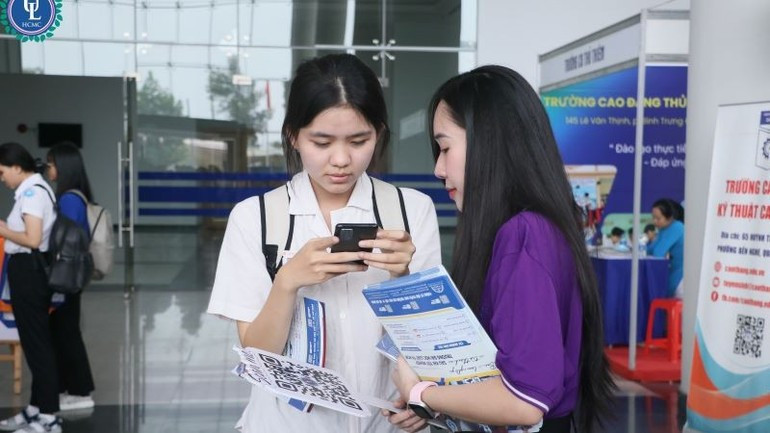
Moreover, the digital competence and AI proficiency of lecturers remain a major bottleneck. Many lecturers still regard AI as a peripheral tool rather than recognising it as a technology capable of fundamentally reshaping teaching and learning activities.
To enhance training quality through AI, universities must accelerate digital skills training for both lecturers and students — considered a decisive factor for the effective integration of AI in higher education.
At the same time, higher education institutions should strengthen investment in modern, synchronised digital infrastructure, laying the foundation for building personalised learning models, automated assessment systems, and data-driven research tools.
Functional agencies also need to complete policies and the legal framework for AI application in higher education. The enactment of a comprehensive AI law in education would create a clear and transparent legal corridor, ensuring the rights of lecturers, students, and training institutions when implementing new technological tools.
